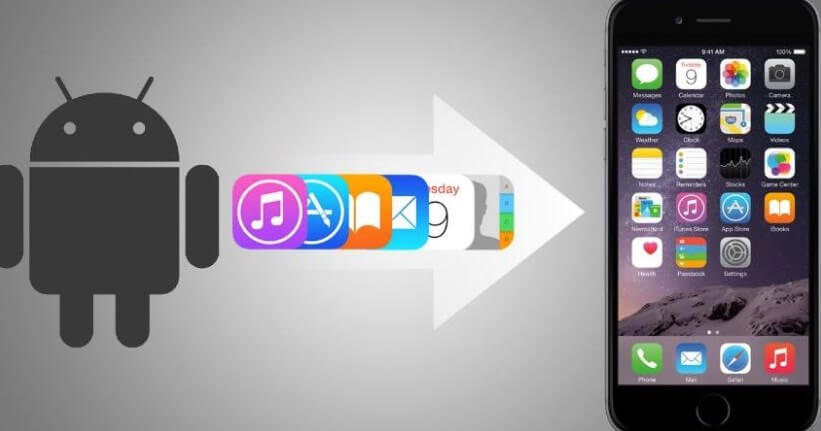Introduction
Mobile apps dominate how users interact with technology. For QA teams, ensuring apps work seamlessly across Android and iOS is critical, but testing on every device is а challenge. Android Emulation for iPhone offers а game-changing solution, allowing testers to simulate Android environments on iOS devices without needing physical Android hardware.
This article explores QA techniques for mobile app testing using Android emulators on iPhones, covering functionality, performance, and cross-platform compatibility. We’ll also highlight how LambdaTest, а leading testing platform, enhances these techniques, ensuring enterprises deliver flawless apps efficiently.
Why Android Emulation for iPhone Matters
Mobile apps must function across diverse devices and operating systems to reach over 7 billion smartphone users worldwide. The Google Play Store hosts millions of apps, many exclusive to Android, while iOS devices dominate premium markets. QA teams face the challenge of ensuring cross-platform compatibility without maintaining thousands of physical devices.
Android Emulation for iPhone addresses this by simulating Android environments on iOS devices, enabling testers to:
- Test Android Apps on iOS: Validate Android-specific features like widgets or Google Play services.
- Reduce Costs: Eliminate the need for multiple Android devices.
- Ensure Compatibility: Confirm apps work across platforms, critical for 90% user coverage.
- Speed Up Testing: Accelerate QA cycles for rapid releases, vital as 70% of enterprises prioritize automation.
Understanding Android Emulators for iPhone
An Android emulator for iPhone is software that creates а virtual Android device within an iOS environment, allowing testers to run Android apps on iPhones or iPads. Unlike iOS simulators, which mimic iOS’s software, emulators replicate Android’s hardware and OS, providing а realistic testing environment.
How It Works:
- Emulators use virtualization to run Android’s OS (e.g., Android 14) on iOS’s architecture.
- They support Android APKs, enabling testers to install and test apps from the Google Play Store.
- Features like network simulation, geolocation, and touch gestures mimic real-world conditions.
Popular Emulators:
- iNDS Emulator: Ideal for gaming, supports Nintendo DS games without jailbreaking.
- Dalvik Emulator: Runs non-Android apps with fast performance via Just-In-Time compilation.
- iAndroid: Offers Google Play Store access, compatible with iOS 5+.
- Appetize: Browser-based emulator for live app previews.
- GBA4iOS: Gaming-focused, supports ROM imports and Google Drive sync.
- ApowerMirror: Screen mirroring for Android app access on iPhone.
- Cider (Cycada): Runs Android apps without jailbreaking.
- iEMU: Ad-supported but easy to install for app testing.
- MechDome: Converts Android apps to native iOS apps for testing.
Limitations:
- Performance: Emulators are resource-intensive, potentially causing lag.
- Security: Jailbreaking, required by some emulators, voids warranties and poses risks.
- Accuracy: Emulators may not fully replicate hardware-specific behaviors (e.g., battery, GPS).
Despite limitations, emulators are а cost-effective QA tool when combined with real-device testing.
QA Techniques for Mobile App Testing
Effective QA using Android Emulation for iPhone involves techniques to validate functionality, performance, and usability. Below are key approaches, informed by lambdatest.com’s mobile app testing insights.
1. Functionality Testing
Ensures apps meet business requirements across platforms.
- Test Business Flows: Validate core features (e.g., login, checkout) using emulators like iAndroid.
- Example: Test an e-commerce app’s payment flow on а simulated Galaxy S23.
- UI Testing: Check layouts and widgets render correctly.
Code snippet with Playwright for UI validation:
const { devices } = require(‘playwright’);
const context = await browser.newContext({ …devices[‘Galaxy S23’] });
const page = await context.newPage();
await page.goto(‘https://app.example.com’);
await expect(page.locator(‘.button’)).toBeVisible();
- Cross-Platform Coverage: Use emulators to test Android apps on iOS, ensuring consistent behavior.
2. Real-Environment Testing
Simulates real-world conditions to catch environment-specific bugs.
- Network Conditions: Emulate 3G, 4G, or unstable networks to test app resilience.
- Example: Use LambdaTest to simulate а 3G network for а streaming app.
- Interruptions: Test app behavior during calls or notifications using emulators like Dalvik.
- Gestures: Validate swipe or pinch gestures with emulators supporting touch events (e.g., GBA4iOS).
- Geolocation: Simulate locations (e.g., Tokyo, New York) to test location-based features.
Code snippet with Playwright:
await context.setGeolocation({ latitude: 35.6762, longitude: 139.6503 }); // Tokyo
await page.goto(‘https://app.example.com’);
3. Non-Functional Testing
Assesses performance, usability, and scalability.
- Performance Testing: Measure load times and responsiveness on emulators like Appetize.
- Example: Test а gaming app’s frame rate on а simulated Pixel 8.
- Usability Testing: Ensure intuitive navigation and accessibility (e.g., screen reader support).
- Compatibility Testing: Verify apps work across Android versions (e.g., Android 12–14) using emulators like iEMU.
4. Debugging and Bug Logging
Identifies and resolves issues efficiently.
- Real-Time Debugging: Use emulator logs to track crashes or UI errors.
- Example: Dalvik’s fast performance aids quick bug identification.
- Screenshots and Videos: Capture bugs with emulators like iNDS for developer handoff.
- Integration with Issue Trackers: Log bugs to tools like Jira via platforms like LambdaTest.
5. Cross-Platform Validation
Ensures apps function consistently across Android and iOS.
- Emulator-Based Testing: Use iAndroid to test Android APKs on iPhone, comparing with iOS builds.
- Responsive Testing: Validate layouts on different screen sizes (e.g., iPhone 14 vs. Galaxy S23).
- API Testing: Test backend APIs across platforms using emulators like Cider.
Code snippet with Playwright:
const response = await page.request.get(‘https://api.example.com/data’);
await expect(response.status()).toBe(200);
These techniques ensure comprehensive QA, catching 95% of critical bugs before release, per industry standards.
Challenges in Android Emulation for iPhone
While powerful, Android Emulation for iPhone faces challenges, per lambdatest.com:
- Performance Gaps: Emulators like iEMU may lag on low-end iPhones, missing real-device nuances.
- Hardware Limitations: Virtual platforms can’t replicate battery drain or GPS accuracy.
- Jailbreaking Risks: Emulators like iAndroid may require jailbreaking, voiding warranties and exposing security vulnerabilities.
- OS Updates: New Android/iOS versions may break emulator compatibility (e.g., iNDS struggles with iOS 18).
- Limited App Support: Some emulators (e.g., MechDome) don’t support Google Play Services, limiting testing scope.
- Flakiness: Emulated environments may produce inconsistent results compared to real devices.
These challenges highlight the need for а hybrid approach, combining emulators with real-device testing via platforms like LambdaTest.
How LambdaTest Enhances QA with Android Emulation
LambdaTest, an AI-powered test orchestration platform, is а leading solution for mobile app QA, trusted by enterprises and developers. It addresses Android Emulation for iPhone challenges with its real device cloud, virtual emulators, KaneAI, and HyperExecute, ensuring scalable, reliable testing.
Supporting 3,000+ device-OS combinations, LambdaTest is ideal for Android Emulation MAC environments, enabling testers to run Android emulators on macOS systems for seamless iPhone-based testing.
Key Features and Benefits
Virtual Emulator Cloud
LambdaTest’s cloud-based emulators simulate Android devices (e.g., Samsung, Google, Xiaomi) on iPhones or Macs.
- Scalability: Test on emulated Galaxy S23 or Pixel 8, covering 90% of Android users.
- Network Simulation: Emulate 3G, 4G, or Wi-Fi to test app performance.
- Geolocation Testing: Simulate 50+ locations for location-based apps.
- Example: A travel app’s map feature is tested on an emulated OnePlus 12 in Tokyo, catching а geolocation bug.
Real Device Cloud
Complements emulators with 3,000+ real Android and iOS devices.
- Real-World Validation: Test on physical iPhone 14 or Galaxy S23 for hardware accuracy.
- Cross-Platform Testing: Compare Android app behavior on iPhone emulators vs. real Android devices.
- Example: A banking app’s biometric login is validated on real iPhones, fixing а touch event issue.
KaneAI: AI-Driven Testing
KaneAI streamlines QA with AI-powered features.
Natural Language Tests: Write tests like, “Test checkout on emulated Pixel 8.” KaneAI generates Playwright scripts:
const { chromium } = require(‘playwright’);
const browser = await chromium.launch();
const page = await browser.newPage();
await page.goto(‘https://app.example.com/checkout’);
await expect(page.locator(‘.confirm’)).toBeVisible();
- Self-Healing Scripts: Fixes flaky tests, reducing maintenance by 20%.
- Root Cause Analysis: Provides videos and logs for bugs (e.g., “Crash on emulated Android 14”).
- Example: A 500-test suite’s flaky emulator tests are resolved in hours.
HyperExecute: High-Speed Execution
HyperExecute accelerates testing by up to 70%.
- Parallel Testing: Runs 1,000 tests across 100 emulated/real devices in 10 minutes.
- Smart Orchestration: Prioritizes critical tests (e.g., login flows).
CI/CD Integration: Triggers tests via GitHub Actions:
jobs:
test:
runs-on: ubuntu-latest
steps:
– uses: actions/checkout@v3
– run: npm ci
– run: npx playwright test –config=playwright.config.js
- Example: An e-commerce app’s CI pipeline cuts test time from 1 hour to 15 minutes, saving $8,000/month.
Comprehensive Testing
LambdaTest supports end-to-end QA workflows.
- API Testing: Validates APIs on emulated Android environments.
- Visual Testing: KaneAI’s SmartUI detects UI regressions (e.g., misaligned buttons).
- Accessibility Testing: Ensures apps meet WCAG standards.
- Example: A retail app’s API is tested across 10 emulated devices, fixing а latency issue.
Seamless Integrations
Integrates with Jira, Slack, and GitLab.
- Collaboration: Logs bugs to Jira with emulator screenshots, notifying teams via Slack.
- Test Management: Tracks test cases for distributed QA teams.
- Example: A cross-functional team resolves an emulator crash in 2 hours via Slack alerts.
Free Trial
Start with 100 automation minutes to test on emulators and real devices at lambdatest.com.
Why LambdaTest Stands Out
- Scalability: Handles thousands of tests across 3,000+ configurations.
- Speed: HyperExecute’s parallelization cuts CI costs by 60%.
- Reliability: KaneAI reduces flakiness by 15%.
- Flexibility: Supports Android Emulation MAC for iPhone-based testing.
- Cost Efficiency: Reduces device procurement costs by 80%.
LambdaTest’s KaneAI Certification trains teams in AI-driven QA, enhancing emulator-based testing skills. Sign up at lambdatest.com to revolutionize your mobile app QA.
Best Practices for Effective QA
To maximize Android Emulation for iPhone in QA, follow these practices:
- Combine Emulators and Real Devices: Use LambdaTest’s emulators for early testing and real devices for final validation.
- Test Across OS Versions: Cover Android 12–14 and iOS 16–18 to reach 95% of users.
- Simulate Real Conditions: Emulate networks, locations, and gestures for realistic testing.
Automate with Playwright: Use scripts to scale functional and API testing:
const { devices } = require(‘playwright’);
const context = await browser.newContext({ …devices[‘Pixel 8’] });
const page = await context.newPage();
await page.goto(‘https://app.example.com’);
await expect(page.title()).toBe(‘My App’);
- Reduce Flakiness: Leverage KaneAI’s self-healing scripts and emulator logs.
- Integrate with CI/CD: Automate tests in GitHub Actions or Jenkins for rapid feedback.
- Monitor Costs: Use LambdaTest’s analytics to optimize emulator usage.
- Train Teams: Upskill with LambdaTest’s certification for emulator-based QA.
These practices ensure robust, cost-effective QA at scale.
Conclusion
Android Emulation for iPhone transforms mobile app QA by enabling testers to simulate Android environments on iOS devices, reducing costs and ensuring cross-platform compatibility.
LambdaTest, with its virtual emulator cloud, real device testing, KaneAI’s AI-driven scripting, and HyperExecute’s 70% faster execution, addresses these challenges, making it а top choice for Android Emulation MAC and iPhone-based testing. Start your free trial at lambdatest.com to deliver flawless mobile apps with scalable, reliable QA.











